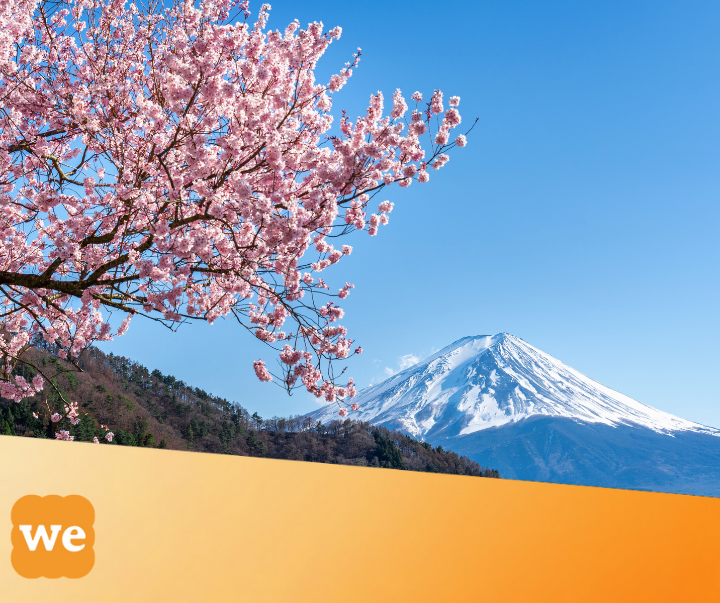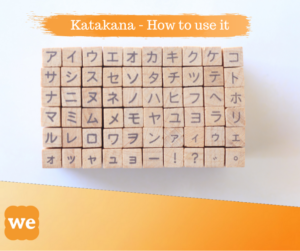
If you ever traveled to Japan (but even if you didn’t) you surely noticed that there are many cherry blossom trees everywhere. Surrounding lakes and rivers, beautifully aligned in the streets, in parks… Also, postcards do always include famous places with cherry blossoms in them.
But why is cherry blossom so important in Japan? Keep reading to discover it.
桜 - Sakura, The National Flower Of Japan
The cherry blossom is an important cultural symbol in Japan. It’s even considered the national flower of the nation!
Japanese people do wait for their blooming as a major event. Every year, at the end of winter, the cherry blossom forecast will show you the perfect time to see them in every region of Japan.
Cherry Blossom: The Japanese Word And Its Meaning
The first thing to know about cherry blossom is its name in Japanese: sakura, with the kanji 桜. This flower represents the beginning of spring and life. Due to its quick blooming, it is also associated with the transcience of life, a major theme in Buddhism.
Their life is very short, so why not fully enjoy their view?
Japanese people will gather underneath cherry blossoms, enjoying eating, drinking, and barbecuing during the spring season. This tradition is called hanami, 花見 (はなみ), literally “watching flowers”. Lastly, as you may know, Sakura is also a popular proper female name.

Nihongo Spirit : 桜は日本人の心...
The tradition of enjoying Sakura has deep roots in Japan. Countless poems were dedicated to this flower, and its essence reflects the Japanese spirit.
Keep reading to learn more about cherry blossoms in Japan.
By reading this article from our content partner, the Hiragana Times magazine, you can learn new words and concepts about the Japanese language!
Cherry Blossoms Are At The Heart Of What It Means To Be Japanese
The school year in Japan starts in April, so many people associate school entrance ceremonies with cherry blossoms.
日本 (にほん)の学校(がっこう)は4月(しがつ)に始(はじ)まり、入学式(にゅうがくしき)と言(い)えばたくさんの人(ひと)が桜(さくら)をイメージ(イメージ)します。
Quite a few schools have cherry trees planted on their grounds and these can often be seen floating in the background in commemorative pictures taken of parents with their children. 多(おお)くの学校(がっこう)の校庭(こうてい)に桜の木(き)が植(う)えられていて、それをバックに、親子(おやこ)が記念撮影(きねんさつえい)する風景(ふうけい)が見(み)られます。
Some people sense a mother’s warmth in these gorgeous cherry blossoms.
桜の華(はな)やかさに母(はは)のぬくもりを感(かん)じる人(ひと)もいます。
Cherry blossoms are sometimes considered to be a symbol of romantic feelings.
桜はロマンチック(ろまんちっく)な心情(しんじょう)の象徴(しょうちょう)とされることもあります。
The poet YOSANO Akiko composed the following:
歌人(かじん)の与謝野晶子(よさのあきこ)はこう詠(よ)みました。
“Early evening moon, Over the flowering field, I felt somehow, He was waiting for me, And I came.”
「なにとなく 君(きみ)に待(ま)たるるここちして出(い)でし花野(はなの)の夕月夜(ゆうづき)かな」
In the following military song, beautiful cherry blossoms falling after a mere week are compared to soldiers going off to the battlefield:
きれいに咲(さ)いた後(あと)、1週間(いっしゅうかん)ほどで散(ち)っていく桜を、戦場(せんじょう)に向(む)かう兵士(へいし)とかさねた軍歌(ぐんか)にはこうあります。
“You and I are cherry blossoms of the same year …, Once we bloom, we are ready to fall, Let’s fall beautifully for our motherland.”
「貴様(きさま)と俺(おれ)とは同期(どうき)の桜(さくら)咲(さ)いた花(はな)なら散(ち)るのは覚悟(かくご)みごと散(ち)りましょ国(くに)のため」
The next poem, attributed to the Zen master and priest Ryokan, is a well-known masterpiece about the meaning of life. “Cherry blossoms are falling, Those that remain are also fated to fall.”
禅(ぜん)の道(みち)極(きわ)めた僧侶(そうりょ)、良寛(りょかん)によるものとされる次(つぎ)の句(く)、「散(ち)る桜(さくら)残(のこ)る桜(さくら)も散(ち)る桜(さくら)」は、いのちとは何(なに)かを表(あらわ)した名句(めいく)として知(し)られています。
The cherry blossom is a flower of both beauty and transience, a flower that reflects the delicate feelings of the Japanese people.
美(うつく)しさとはかなさが同居(どうきょ)する桜(さくら)は、繊細(せんさい)な日本人(にほんじん)の心情(しんじょう)が重(かさ)なる花(はな)でもあります。

Thank you for reading!


